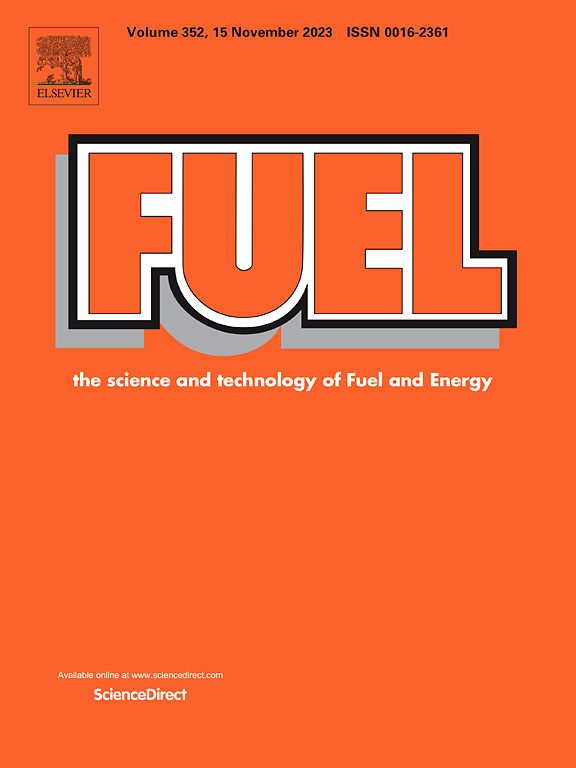一种新型燃料电池阴离子交换膜的水合成方法
IF 6.7
1区 工程技术
Q2 ENERGY & FUELS
引用次数: 0
摘要
本研究报告了一种环保、经济、直接的制备壳聚糖(CS)/聚二烯基二甲基氯化铵(PDDA)混合阴离子交换膜的水处理策略,其中CS溶解在KOH/尿素/H2O体系中形成聚合物基质,PDDA作为氢氧离子导体。从溶液中浇注膜,在KCl(aq)中中和形成凝胶膜,然后脱水形成膜。强大的氢键交联有助于壳聚糖链的横向聚集,确保了优异的组分相容性,低面内膨胀(80℃时4.3 - 10.3%)和良好的机械性能。CS和PDDA固有的亲水性使其具有较高的通平面膨胀率(80℃时为45.0 ~ 150.1%)和吸水率(80℃时为142.5 ~ 327.2%)。高吸水性有助于提高氢氧根电导率(在80°C时为22.6-41.2 mS cm - 1),并显著提高热KOH溶液中的碱性稳定性(质量保持率:79.3 - 88.6%;IEC保留率:70.6 - 73.9%;电导率:76.8 - 86.1%)。优化后的PDDA@CS7.0%-2膜在325.2 mA cm -2下的峰值功率密度为180.0 mW cm -2,与CS或基于pdda的AEMs相比具有竞争力。本文章由计算机程序翻译,如有差异,请以英文原文为准。

A novel aqueous synthesis of anion exchange membranes for fuel cells
This work reports an eco-friendly, economical, and straightforward fabrication of chitosan (CS)/poly(diallyldimethylammonium chloride) (PDDA) blended anion exchange membranes via an aqueous processing strategy, where CS dissolved in a KOH/urea/H2O system forms the polymer matrix and PDDA acts as the hydroxide-ion conductor. Membranes are cast from solution and neutralized in KCl(aq) to form a gel film, followed by dehydration to form films. Robust hydrogen bond cross-linking facilitates lateral aggregation of chitosan chains, ensuring excellent component compatibility, low in-plane swelling (4.3–10.3 % at 80 °C), and favorable mechanical properties. The inherent hydrophilicity of CS and PDDA, imparts high through-plane swelling (45.0–150.1 % at 80 °C) and water uptake (142.5–327.2 % at 80 °C). High water uptake facilitates improved hydroxide conductivity (22.6–41.2 mS cm−1 at 80 °C) and significantly enhances alkaline stability in hot KOH solutions (mass retention: 79.3–88.6 %; IEC retention: 70.6–73.9 %; conductivity retention: 76.8–86.1 %). The optimized PDDA@CS7.0%-2 membrane achieves a peak power density of 180.0 mW cm−2 at 325.2 mA cm−2, demonstrating competitive performance among CS or PDDA-based AEMs.
求助全文
通过发布文献求助,成功后即可免费获取论文全文。
去求助
来源期刊

Fuel
工程技术-工程:化工
CiteScore
12.80
自引率
20.30%
发文量
3506
审稿时长
64 days
期刊介绍:
The exploration of energy sources remains a critical matter of study. For the past nine decades, fuel has consistently held the forefront in primary research efforts within the field of energy science. This area of investigation encompasses a wide range of subjects, with a particular emphasis on emerging concerns like environmental factors and pollution.
 求助内容:
求助内容: 应助结果提醒方式:
应助结果提醒方式:


